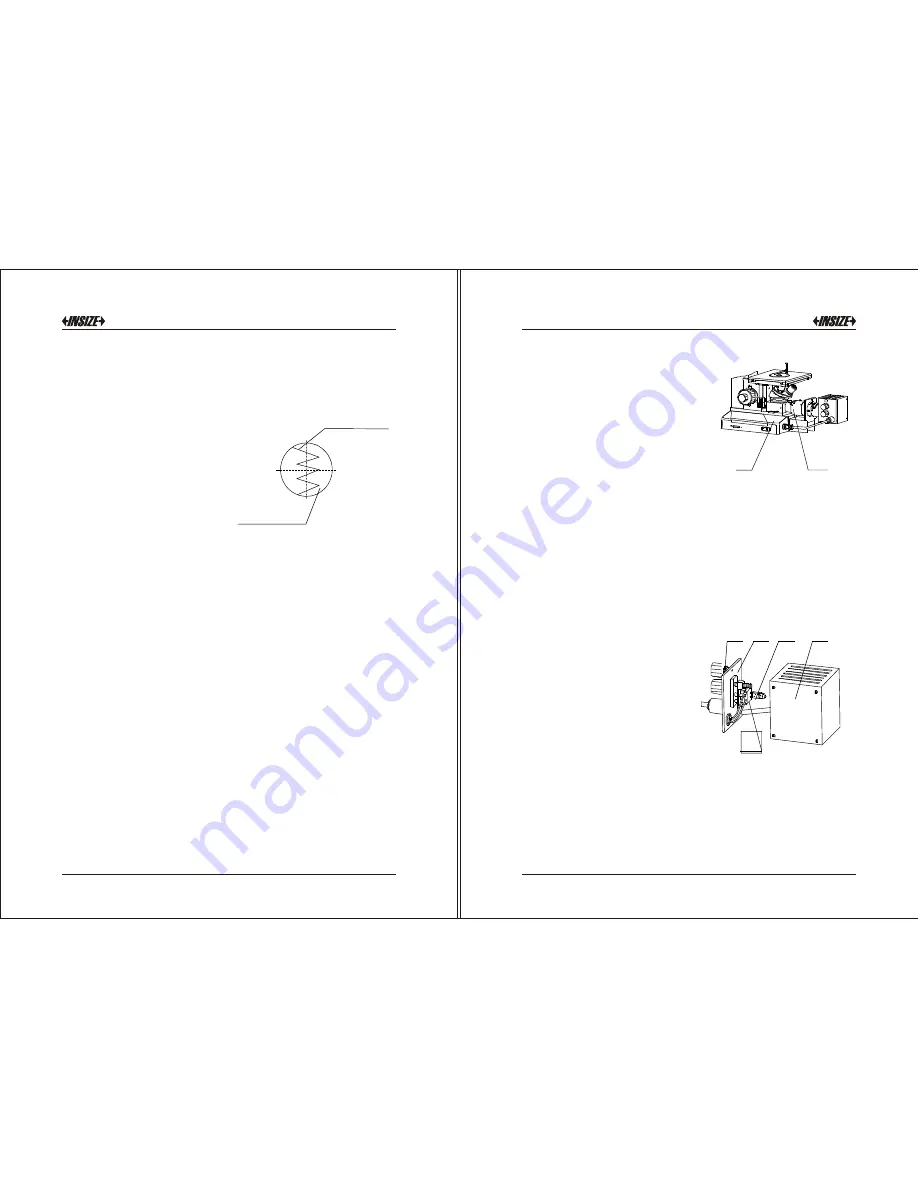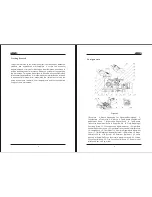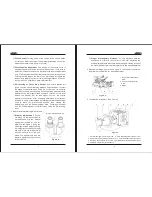
The aperture diaphragm near the illuminator house in the vertical
illuminator tube may be adjusted slightly to change contrast.
To center the incident or vertical lamp.
Reinstall the objective again.
Adjust the focusing control until the image clear. If brightness of
field not equality, you may move the lamp adjustment and focusing
lens adjustment lever slightly to make the brightness of field
equality.
Reduce the field diaphragm, If it is not centered, move it to the
center using the centering screw. Adjustment can be done by
opening the field diaphragm.
The green, yellow, blue filter and ground glass can be inserted in
the socket to obtain an image of good quality; also the polarizer
(optional) can be inserted in the socket to make the polarizing
analyzer on work.
Overpass Hole
Filament Image
孔
Figure
7
Put a piece of paper and
place it on the stage.
Take out one objective
form nosepiece and
rotate the nosepiece until
this objective opening
hole is in position over
the paper.
Turn the power on and
adjust the brightness
c o n t r o l t o e s t a b l i s h
sufficient light.
1
2
Figure
8
1. Analyzer (Optional)
2. Polarizer (Optional)
3
1
2
4
5
Figure
9
1. Set Screw
2. Cover Board
3. Lamp
4. Lamp House
5. Lamp Socket
1)
2)
3)
4)
5)
a)
c)
b)
This paper will allow for focusing of the lamp filament on it. If the
filament image is not centered in the overpass hole, reduce the
aperture diaphragm, adjust the light bulb transverse and vertical
adjustment to obtain a uniform image. Adjust the focusing lens
lever until a sharp image of the lamp filament is attained, refer to
figure 7 for this step.
6)
To Observe the Facility Polarizer
(Optional)
Turn the Analyzer and Polarizer
to the light way (Figure 8), so
that the analyzer used for
transmitted light work., rotate
the polarizer (Figure 6)while
watching the brightness in the
field and let the polarizer and
analyzer orthogonally.
The white push rod to the upper
left of the trinocular head will
send 100% of the image light to
the binocular eyepieces or to the
top port. It satisfies high-grape
photography.
Turn off and unplug the
Microscope.
Loosen the set screw, see figure
9, remove the entire cover board
from the lamp house.
The halogen lamp can be removed
by grasping the lamp and pulling it
firmly from its fixture. Take care not
to touch the lamp with bare fingers,
as the lamp will be hot.
Insert the new halogen lamp into
the same fixture. When installing
the new lamp, be careful not to
touch the glass with your fingers.
6.
7.
1.
2.
3.
4.
Changing the Lamp
9
10







